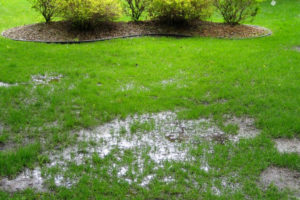
Have You Noticed A Landscaping Drainage Problem?
Instead of letting this water take over, you need to take action. Having a landscaping drainage system installed is the perfect solution. It can take a long time to research and understand all the different yard drainage solutions. To save you time and effort, here are a few landscape drainage methods and solutions that you can try. The first thing you need to do is analyze your yard and its nature. You may need to get help from a professional in order to assess what the exact topography is. One reason for groundwater is the water table. The water table is the boundary between this water-saturated zone and the dry zone. According to Longview News-Journal, when a home has a high water table, the underground water is close to the surface. This means that soil is saturated by water, which can impact the home and yard in a number of ways. The other need for drainage is rainfall, especially where heavy downpours are quite common. The water will drain poorly and can flood very quickly. If the proper drainage solutions have not been done when the rainfall is added to a high water table, the potential of damage is increased.
A Few Landscaping Drainage Solutions
Pooling water attracts pests and causes damage to your landscaping and foundation. The best way to avoid these situations is with landscaping drainage methods.
To help you on your standing water drainage journey, we would like to offer these solutions:
- Surface Drainage is the orderly removal of excess water from the land surface and the root zone by means of channels or supplemented ditches. It may be necessary to shape and grade the land surface to provide a slope toward the channels. Sites with clay soil tend to have problems with water lingering on the surface. Sometimes lots are not properly graded by builders and water becomes trapped. This is what causes muddy areas in your garden and lawn. If you are experiencing this, an ancient drainage solution is the French drain. A French drain is a trench filled with gravel, rock, or both, containing a perforated pipe that redirects surface water and groundwater away from an area. In order to drain the trench, the surrounding area gets graded so that the water will not gather on the ground surface any longer.
- Underground Drainage is the general term given to the system of pipes and fittings that is installed below ground level to transport foul drainage or rainwater flows to a sewage treatment facility or, in the case of rainwater, a soakaway or watercourse. In areas of high rainfall, your drainage plan might be the most critical aspect of your landscaping. These types of drainage systems are more expensive to install, but they are well worth it. The purpose of the underground drain is to re-direct the water away from the home, usually to the street or the sidewalk. Sometimes they even connect directly to the sewer line underground
- Plants That Like To Be In Water: Types Of Plants That Tolerate Wet Areas -Low lying areas that have a high water table are difficult to landscape. Plant roots do not like to be saturated. Some good options include riparian buffers such as grasses, grass-like, forbs, shrubs, trees, or other vegetation growing along streams. These plants control erosion and help filter and keep the water clean. Another solution would be to plant a raised flower garden. For most plants, fill your raised bed with a well-mixed combination of organic matter (i.e. well-rotted manure), sharp sand, and topsoil. You can grow perennials in raised-bed gardens. Select plants that are at least one zone hardier to decrease the risk of winter damage.
Drainage problems need to be addressed because poor drainage can compromise the foundations of a home, damage plants in the garden, look unsightly, and make it difficult to walk around the garden or yard. Poor drainage can also contribute to erosion and other problems.
Contact us (859-640-0657) for a free consultation!
—

About Presentable Landscape
Presentable Landscape provides many landscaping services to our customers in Northern Kentucky and Greater Cincinnati.
- Clean ups
- Pruning / Trimming
- Paver Patios
- Mulching
- Retaining Walls
- Drainage
- Leaf Removal
- Gutter Cleaning